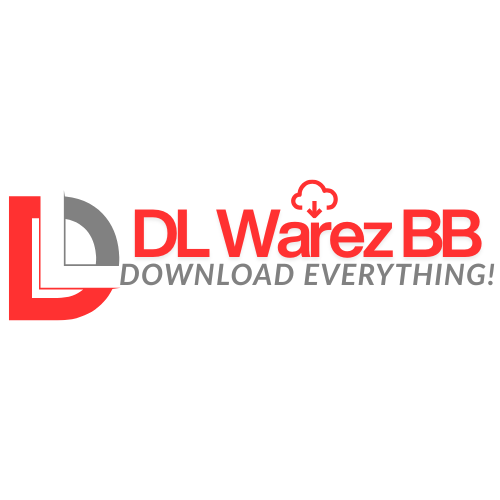![[Image: 10bf5dc88eb7b207a2e30c04602882e0.jpeg]](https://i124.fastpic.org/big/2024/1225/e0/10bf5dc88eb7b207a2e30c04602882e0.jpeg)
Free Download Building An Employee Management System With Pyqt
Published: 12/2024
MP4 | Video: h264, 1920x1080 | Audio: AAC, 44.1 KHz
Language: English | Size: 1.05 GB | Duration: 1h 46m
Master PyQt and build a functional Employee Management System with a modern graphical interface and database integration
What you'll learn
How to design and implement GUI applications using PyQt.
How to integrate a database (SQLite or MySQL) with a PyQt application.
How to perform CRUD operations on employee data using a database.
How to build a fully functional Employee Management System.
Error handling and data validation in desktop applications.
Requirements
Basic knowledge of Python programming.
Familiarity with SQL and relational databases (e.g., SQLite, MySQL).
No prior experience with PyQt is required; this course covers everything from the basics.
A development environment set up for Python and PyQt (instructions will be provided in the course).
Description
Introduction:In this course, you will learn how to develop an Employee Management System using PyQt, a powerful Python framework for building desktop applications. You will explore how to create a modern user interface, integrate a database, and implement CRUD (Create, Read, Update, Delete) operations to manage employee data effectively. Throughout this hands-on course, you will build a complete application from scratch, learning both the front-end GUI design and the back-end database handling, making this course ideal for both beginner and intermediate Python developers.Section-Wise Writeup:Section 1: IntroductionIn this section, we introduce the project and its objectives. You'll get an Overview of PyQt and how it can be used to create professional desktop applications.Lecture 1: Introduction to Project - Overview of the course, the tools and technologies involved, and What you'll learn by building the Employee Management System.Section 2: PyQt Setup and LayoutsThis section covers setting up your environment, installing PyQt, and designing the main application layout.Lecture 2: Setting up PyQt Environment - Installing PyQt and preparing your development environment for building the application.Lecture 3: Creating the Main Layout - Designing the main window for the application with menus, buttons, and a dashboard.Lecture 4: Add Employee Interface - Designing the form to add new employee data to the system.Lecture 5: Update Employee Interface - Creating a form to update employee details.Lecture 6: Delete Employee Interface - Designing a form to delete employee records from the system.Lecture 7: View Employee Interface - Creating the interface to display employee data in a table format.Section 3: Database IntegrationIn this section, you will learn how to integrate a database (SQLite or MySQL) to store and manage employee data, and perform CRUD operations.Lecture 8: Setting up the Database - Configuring the database and creating necessary tables for storing employee information.Lecture 9: Adding Employee Data - Implementing functionality to add new employee data into the database.Lecture 10: Updating Employee Data - Implementing the functionality to update existing employee records in the database.Lecture 11: Deleting Employee Data - Implementing the functionality to delete employee records from the database.Lecture 12: Fetching and Displaying Data - Fetching employee data from the database and displaying it in the application's table.Section 4: Enhancements and Final OutputIn this section, you will implement enhancements such as error handling, data validation, and ensure smooth communication between the front-end and back-end of your application.Lecture 13: Error Handling and Data Validation - Ensuring proper validation of user input and handling potential errors.Lecture 14: Final Testing and Output - Testing the application and ensuring that all features are functioning correctly, from data entry to database updates.Conclusion:By the end of this course, you will have created a fully functional Employee Management System using PyQt and a database. You will gain practical experience in building desktop applications with Python, creating dynamic UIs, and managing data with databases. This course will provide you with the essential skills to develop real-world applications, and you can extend the project further for more advanced features, such as reporting, searching, and user authentication.
Overview
Section 1: Introduction
Lecture 1 Introduction to Project
Section 2: Layouts
Lecture 2 Adding Dependencies
Lecture 3 Main Layout
Lecture 4 Add Employee
Lecture 5 Update Employee
Lecture 6 Delete Employee
Lecture 7 View Employee
Section 3: Database
Lecture 8 Adding Data in Database Part 1
Lecture 9 Adding Data in Database Part 2
Lecture 10 Adding Data in Database Part 3
Lecture 11 Adding Data in Database Part 4
Lecture 12 Deleting Data in Database
Lecture 13 Displaying Data in Database
Lecture 14 Mapping Layouts with Buttons
Section 4: Output
Lecture 15 Output of the Project
Beginner and intermediate Python developers who want to build desktop applications using PyQt.,Developers interested in integrating databases with Python applications.,Anyone looking to build a real-world, functional Employee Management System.,Students and professionals who want to add PyQt application development to their skillset.
Homepage:
DOWNLOAD NOW: Building An Employee Management System With Pyqt
Recommend Download Link Hight Speed | Please Say Thanks Keep Topic Live
No Password - Links are Interchangeable
![[Image: signature.png]](https://softwarez.info/images/avsg/signature.png)







